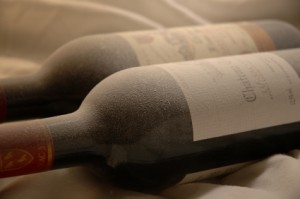 A few weeks ago, my husband and I nervously pulled the cork of a bottle we had tended for almost 15 years. Many occasions came and went with the discussion of whether it was too early, late or the perfect time.
A few weeks ago, my husband and I nervously pulled the cork of a bottle we had tended for almost 15 years. Many occasions came and went with the discussion of whether it was too early, late or the perfect time.
Only a small percentage of the world’s wines improve with age so it’s a wonderful moment when pure patience wins over anticipation in the battle of cellaring a bottle.
Wine does not have to be expensive to show the benefits of aging. Some Napa Valley Cabernets can gain spectacular benefits in 10 years while some Bordeaux transform after a hundred. Consider these tips on aging wines.
SPARKLING
Champagne, second to Bordeaux, may have the most distorted view of being age worthy. Aged Champagne can be described as an acquired taste. It loses its zip and bubble, making it much like a yeasty still wine. Avid collectors savor the taste but if you were given a bottle as a wedding gift 20 years ago, most likely it will not be what you are expecting. Most sparkling wines and nonvintage Champagne are best when opened within two years of bottling.
FORTIFIED
Fortified wines like Port and Madeira are best bets for long-term cellaring. It’s the combination of high alcohol and sugar slowing down the natural deterioration over time.
REDS
Long-term cellaring of Burgundy is a lot like playing the stock market; unless you know the producer, it’s a gamble. The same can be said of California pinot noir.
When the age-worthy pinot noir offers its combination of acidity, tannin and concentration, it is a masterpiece. But unless the growing conditions and the winemaker’s technique were perfect, most pinot noir is best consumed within two to four years.
CLIMATE CONTROL
Wine storage is generally the most important factor in successful aging. The lower the temperature, the slower the maturation. In general the more slowly a wine intended for aging matures, the greater complexity of the flavors. Also, in general the smaller the bottle size the faster its contents mature.
TO AGE OR NOT TO AGE (AND FOR HOW LONG)
A wine’s potential for aging depends on many factors including vintage, producer and storage conditions. The following is a general guideline for wines intended for cellaring: Cabernet sauvignon: four to 20 years Merlot: two to 12 years Nebbiolo: four to 20 years Pinot noir: two to eight years Sangiovese: two to eight years Tempranillo: two to 10 years Chardonnay: one to six years Riesling: two to 30 years Semillon (dry): two to seven years Semillon (botrytised): five to 25 years